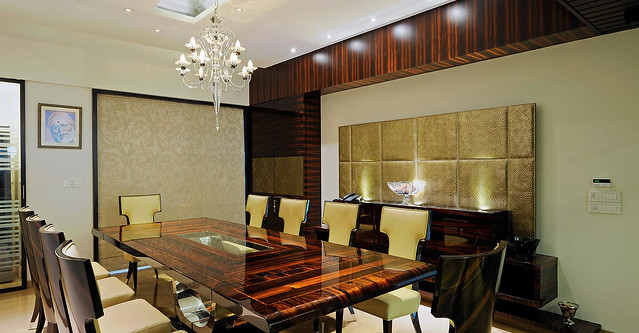In IFI’s words, “Borders may provide structure, but they do not define us. Borders and boundaries play an important role in determining how we understand the world and our place within it. Literal and symbolic borders guide our thoughts and inform our actions.”
WHAT “DESIGN WITHOUT BORDERS” MEANS TO ME:
For me, it means all of these things:
— experiment with newer materials that are less harsh on the ecosystem like the drywall.
— accepting impermanence – creating spaces, walls, and furniture that can be moved around easily like a jigsaw puzzle. Nothing is permanent.
— assemble and dissemble: reducing the time to construct something. For instance, it is a pre-defined notion, that the interiors of say, a 2,200 sq.ft will take 3 months for false ceiling, wardrobes, furniture etc. And, that everything must be done onsite to meet budget and quality standards. It would be revolutionary to change this thinking pattern and accept the build elsewhere and install on site philosophy.
INTERIOR & HOME DECOR TRENDS TO LOOK OUT FOR THIS YEAR:
Here are the home decor trends to look out for this year with two tips later on how to make them timeless.
- Embracing imperfection: in this picture-perfect world of Instagram where no rug seems out of place by an inch, a silent wabi-sabi movement is flaunting the age old Japanese way of impermanence and imperfection.
- Geometric patterns: geometric patterns are all the rage now. You can spot intersecting lines and juxtaposed triangles in everything from tiles and false ceiling to accent furniture and lighting. It’s an ode to clean lines. Minimalists find comfort in embracing geometric wire baskets and triangular pendant lamps.
- Natural materials and textured finishes: the rustic finishes of cement flooring is making a comeback. People are drawn towards the texture of lime-washed walls, micro cement applications for floors, and cement tiles. A toast to eco-friendly ways again.
- Foliage and floral prints on textiles: Thanks to the Jungalow movement by Justina Blakeney, house plants became the favorite decorating accessory globally over the past two years. Now, the foliage and flowers have made their way to textiles and furnishings. You can see them all around you in bed sheets, curtains, cushions, and even on coffee mugs. Our appetite for everything green and natural is insatiable, for now.
- Metallic furniture: subdued bling is here to stay and rule our homes this year. Metal is not new, but the shades and hues are. A touch of gold and a hint of brass add that sophisticated, luxurious touch to lights, vases, mirrors and furniture legs. They bring in a dash of elegance at an affordable price.
The pressure of Instagram-worthy pictures has made today’s homeowners focus more on aesthetics. But, should it be form over function?
There are two design elements, in particular, that I would like to touch upon. They are an extension of this year’s decor trends and my belief in “Design without Borders”.
1. DRY WALL
The spatial constraints in today’s cookie cutter apartments is well known. Drywall from Gyproc is a lightweight interior wall system consisting of a GI steel frame that is encased in gypsum plaster boards on all sides. They are far superior compared to masonry walls. They are lightweight, use 95% less water relative to masonry wall during construction, fire resistant, made from recyclable materials and offer superior sound insulation.
Where you can use drywall:
as spatial dividers, say between the living and dining. A walk-in closet in your bedroom, or a small pantry in the kitchen.

2. FALSE CEILING
Thank Heavens, we have come a long way from the bulky and ornate Plaster of Paris days. I have seen people spend an inordinate effort on false ceilings to create a wooden facade made from ply or teak. You can instead create the same rich, textured look with one of these light weight suspended false ceiling systems from Gyproc.
The acoustic performance, light efficiency, and thermal insulation of these ceiling systems are far superior compared to the traditional PoP ceiling.
Where you can use false ceiling:
In living room to conceal lighting fixtures and improve aesthetics.
In bedroom: for thermal insulation and reduce the load on a/c especially if your bedroom is open a terrace.
In kitchen: to conceal the chimney pipes.
In media room: for good acoustic performance.


Trends come and go. So, don’t feel pressured to change the look of your home every year. Stick to your roots, adopt natural materials, show your love for heirloom brass, repurpose aged wood passed down generations, and you are all set.
